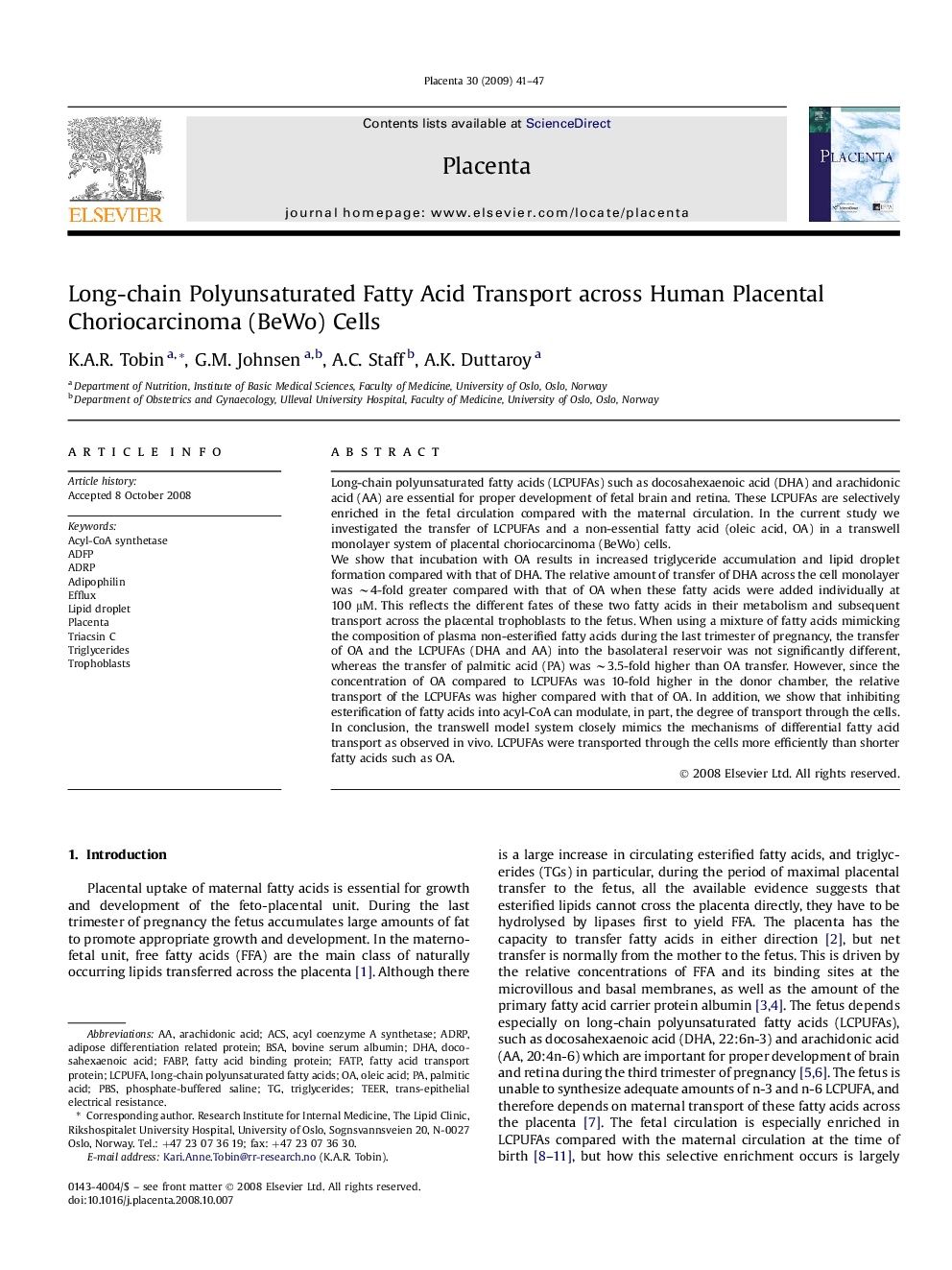| Article ID | Journal | Published Year | Pages | File Type |
|---|---|---|---|---|
| 2789945 | Placenta | 2009 | 7 Pages |
Long-chain polyunsaturated fatty acids (LCPUFAs) such as docosahexaenoic acid (DHA) and arachidonic acid (AA) are essential for proper development of fetal brain and retina. These LCPUFAs are selectively enriched in the fetal circulation compared with the maternal circulation. In the current study we investigated the transfer of LCPUFAs and a non-essential fatty acid (oleic acid, OA) in a transwell monolayer system of placental choriocarcinoma (BeWo) cells.We show that incubation with OA results in increased triglyceride accumulation and lipid droplet formation compared with that of DHA. The relative amount of transfer of DHA across the cell monolayer was ∼4-fold greater compared with that of OA when these fatty acids were added individually at 100 μM. This reflects the different fates of these two fatty acids in their metabolism and subsequent transport across the placental trophoblasts to the fetus. When using a mixture of fatty acids mimicking the composition of plasma non-esterified fatty acids during the last trimester of pregnancy, the transfer of OA and the LCPUFAs (DHA and AA) into the basolateral reservoir was not significantly different, whereas the transfer of palmitic acid (PA) was ∼3.5-fold higher than OA transfer. However, since the concentration of OA compared to LCPUFAs was 10-fold higher in the donor chamber, the relative transport of the LCPUFAs was higher compared with that of OA. In addition, we show that inhibiting esterification of fatty acids into acyl-CoA can modulate, in part, the degree of transport through the cells.In conclusion, the transwell model system closely mimics the mechanisms of differential fatty acid transport as observed in vivo. LCPUFAs were transported through the cells more efficiently than shorter fatty acids such as OA.
